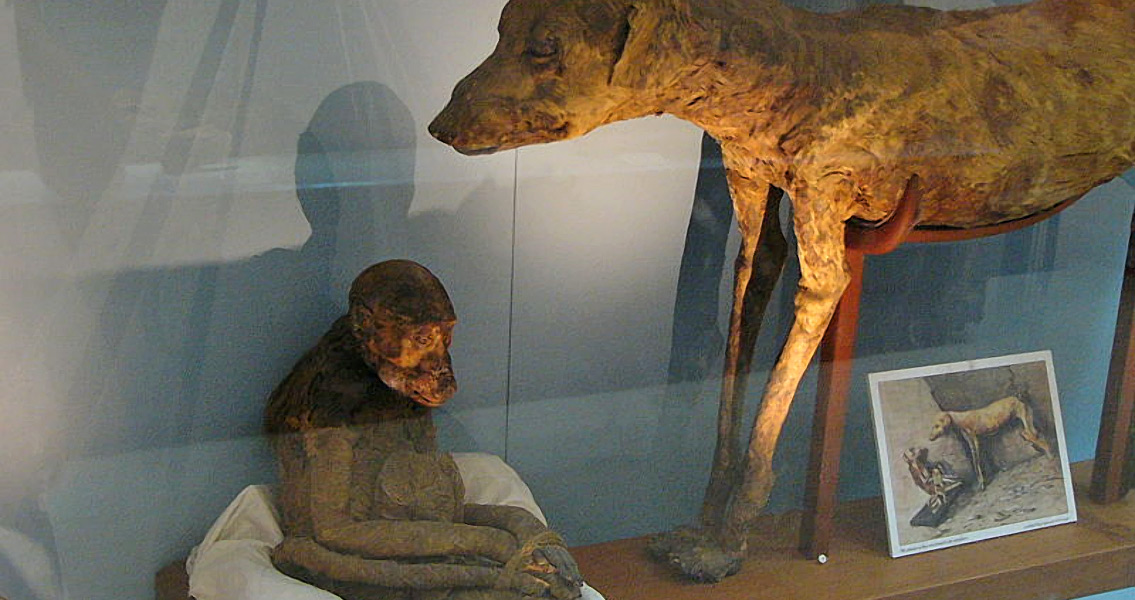<![CDATA[Archaeologists from the University of Cardiff have revealed for the first the full scale of a 2,500-year-old Egyptian catacomb in Saqqara, the necropolis of Memphis. The tomb was first discovered in the nineteenth century but only now have its contents been brought to life. The tomb contains the remains of around eight million puppies and grown dogs which the team believes were sacrificial offerings to Anubis, the death god of ancient Egypt, a temple for whom stands next to the tomb. The lead researcher, Paul Nicholson, told the online journal Live Science that animal cults seem to have been a major part of the Egyptian economy at the time. Saqqara was probably a busy place and nearby dogs and other animals were likely bred so they could be later killed and mummified in honour of the respective animal gods, as offerings of gratitude. Anubis was particularly popular among ancient Egyptians, which would explain the staggering number of dogs whose remains were found in this catacomb. Animal cults, explains Nicholson, ensured the livelihood of many people, including priests, sculptors who made statues of animals, embalmers, builders, dream interpreters, and possibly a host of other craftsmen. It seems the dogs that were to be offered to Anubis were killed not by direct physical action, but were rather left to die from starvation and dehydration, the International Business Times quotes Nicholson as saying. This was true of the puppies, some of them just hours old, which would have died quickly once they were separated from their mothers. Some of the adult dogs, however, may have lived in the temple before their eventual death and mummification. Besides dogs, the tomb contained remains from jackals, foxes, cats, mongoose, and even two falcons, but these made up just about 8% of the total number of remains. There were initially two dog catacombs in Saqqara, as recorded by French archaeologist Jacques de Morgan in 1897. Almost a century later, however, in 1992, an earthquake sealed any access to the smaller of the two. Not much attention had been given to the surviving catacomb until the Cardiff University team started examining it. The tomb’s central passageway is 173 metres long, and at its widest, it is 140 metres including side corridors. It has long been known that animal cults were extremely popular in ancient Egypt. The peak of this popularity was between 747 and 30 BCE, during the Late Period and the Ptolemaic period, reports the Independent. The authors of the study note that these cults were probably a symbol of national identity, which would explain why animal mummification was a practice carried out in such huge quantities. In fact, it was so common that at some points there were not enough animals to mummify, as another recent study has suggested. Scientists from Manchester Museum and the University of Manchester looked at statues believed to contain cat mummies using computer tomography scanning. They found that in almost a third of the sample there were no animal remains at all in the bandages. Team leader Lidija McKnight explained that this could have meant only some soft parts of the animals were mummified, without bones, because every part of the animal was considered sacred enough to qualify as a sacrificial offering. For more information: “The Catacombs of Anubis at North Saqqara” Image courtesy of Wikimedia Commons user: Namiac]]>
Huge Dog Tomb Unearthed in Egypt
